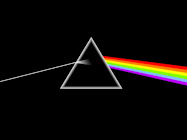Weiss, J.W., Porco, C.C., Richardson, D.C., Dones, L., and Spitale, J.N. (2008). "Saturn's A-Ring Azimuthal Asymmetry Observed at High Solar Phase: Implications for Particle Properties" Bulletin of the American Astronomical Society 40 #29.01.
Abstract
We are expanding our study of this phenomenon to high-solar-phase geometries, observed by Cassini, where sunlight scattered from the planet (a.k.a. planetshine) contributes a significant fraction to the total ring brightness. Modeling these observations with our ray-tracing code requires an accurate planetshine model. We will use an improved photometric model for the globe of Saturn, derived from Cassini images, to examine the azimuthal asymmetry in the mid-A ring as observed in high-solar-phase images. This presentation will compare the new results thus derived for the particles' photometric and elastic properties to our previous low-phase results.
We acknowledge the financial support of the Cassini Project.
Ok, if you understand what this is saying please inform me... really I get the jist, just not so familiar with the terms. Sounds about like trig, I never advanced that far in mathematics






No comments:
Post a Comment